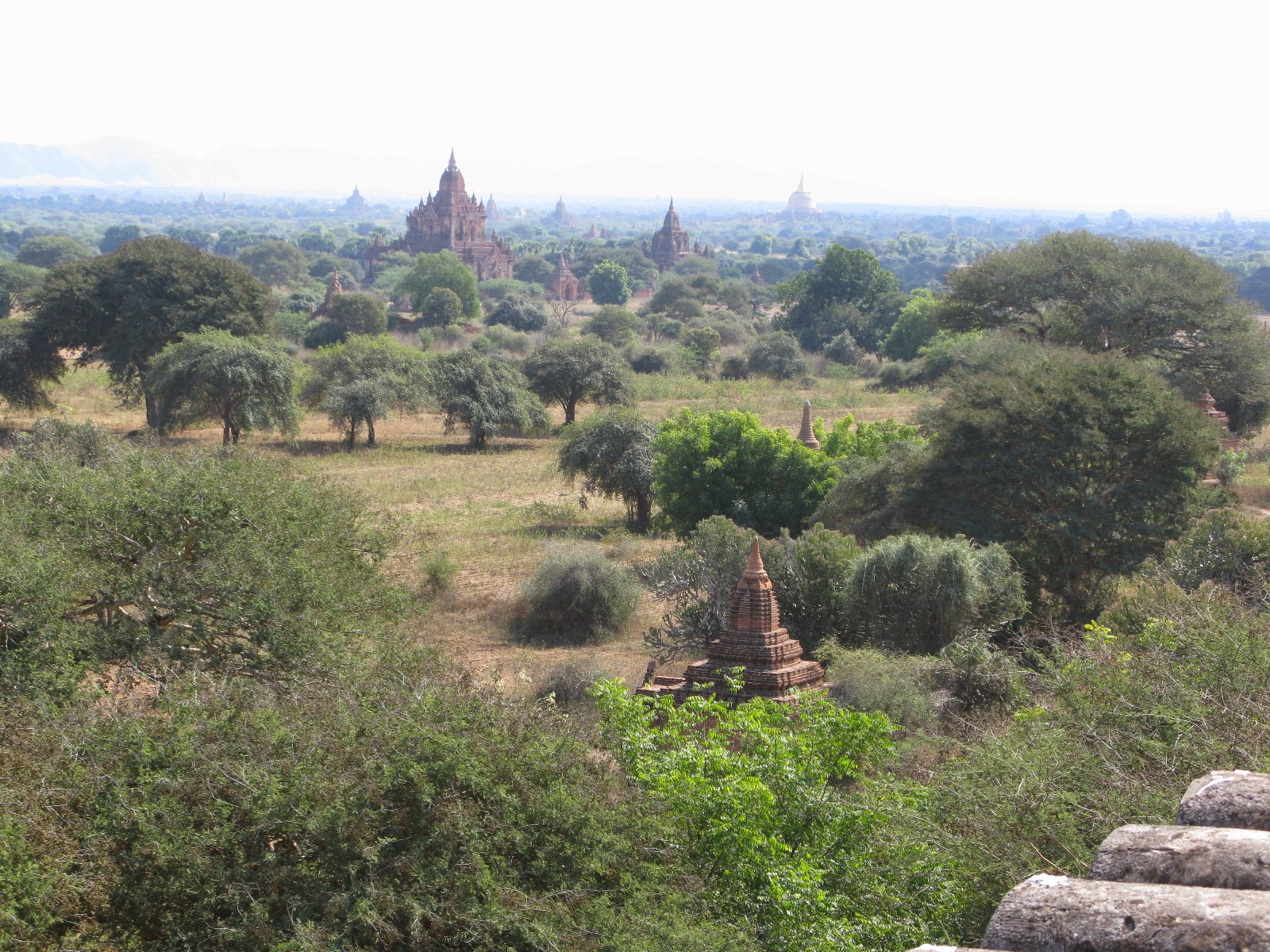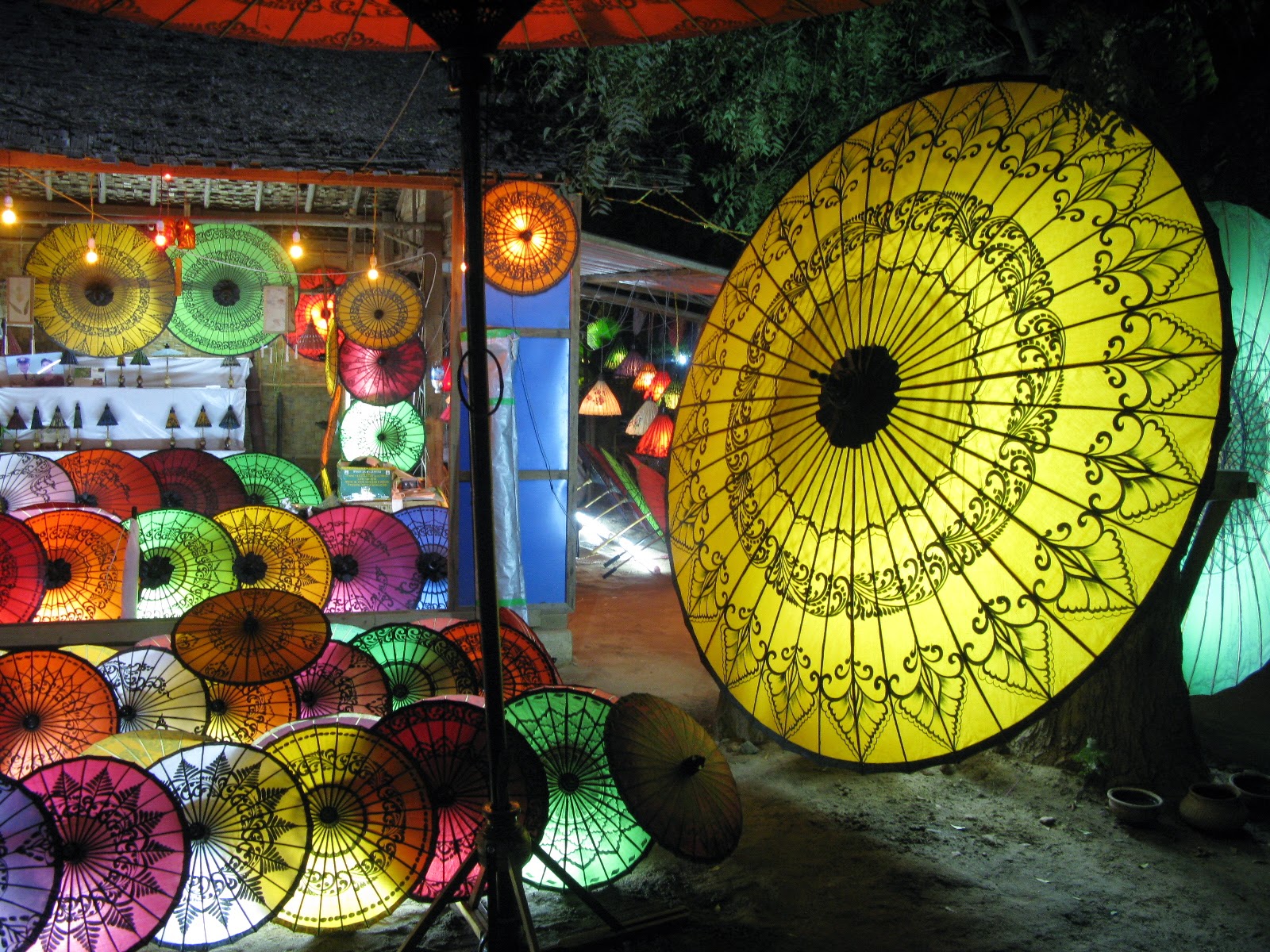 |
| Souvenir umbrella shop, Nyaung U |
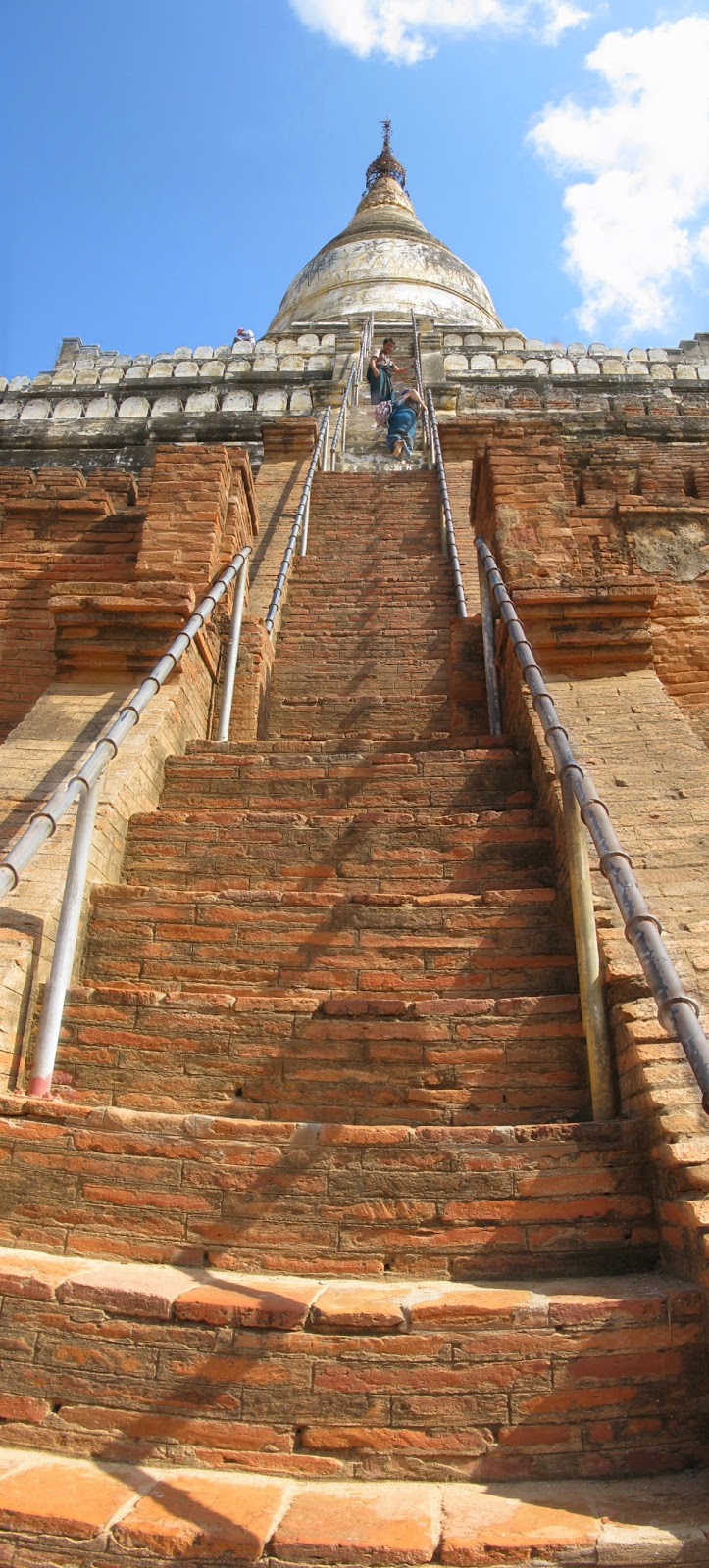 |
| Steep stairs up Shwesandaw |
It’s easy to imagine all of SE Asia as a lush and verdant landscape of coconut palms, banana trees and tangled vegetation (as seen in every Vietnamese war film that Hollywood ever churned out), but this part of Myanmar, between Mandalay and Bagan, is surprisingly arid. Lying in the rain shadow of mountains to the east and west it only gets about 5″ a year, and usually none between November and April, so by January the grass is scorched and sparse and with bald patches of reddish earth. The low, bumpy hills are left to date palms and scrubby, stunted trees, but where the land is flat enough there are small fields of cotton, maize, tobacco, sesame, sunflowers and peanuts. The road we took from Mandalay appeared to be a shortcut rather than the main route, as it crossed several dry streams and one sizeable dry riverbed that would clearly be impassable in the rainy season. Other cars were few and far between – most of the other traffic, such as it was, consisted of motorcycles and bullock carts, the latter trundling slowly along the verges piled with agricultural produce and often with the driver’s attention focussed entirely on the screen of his smartphone.
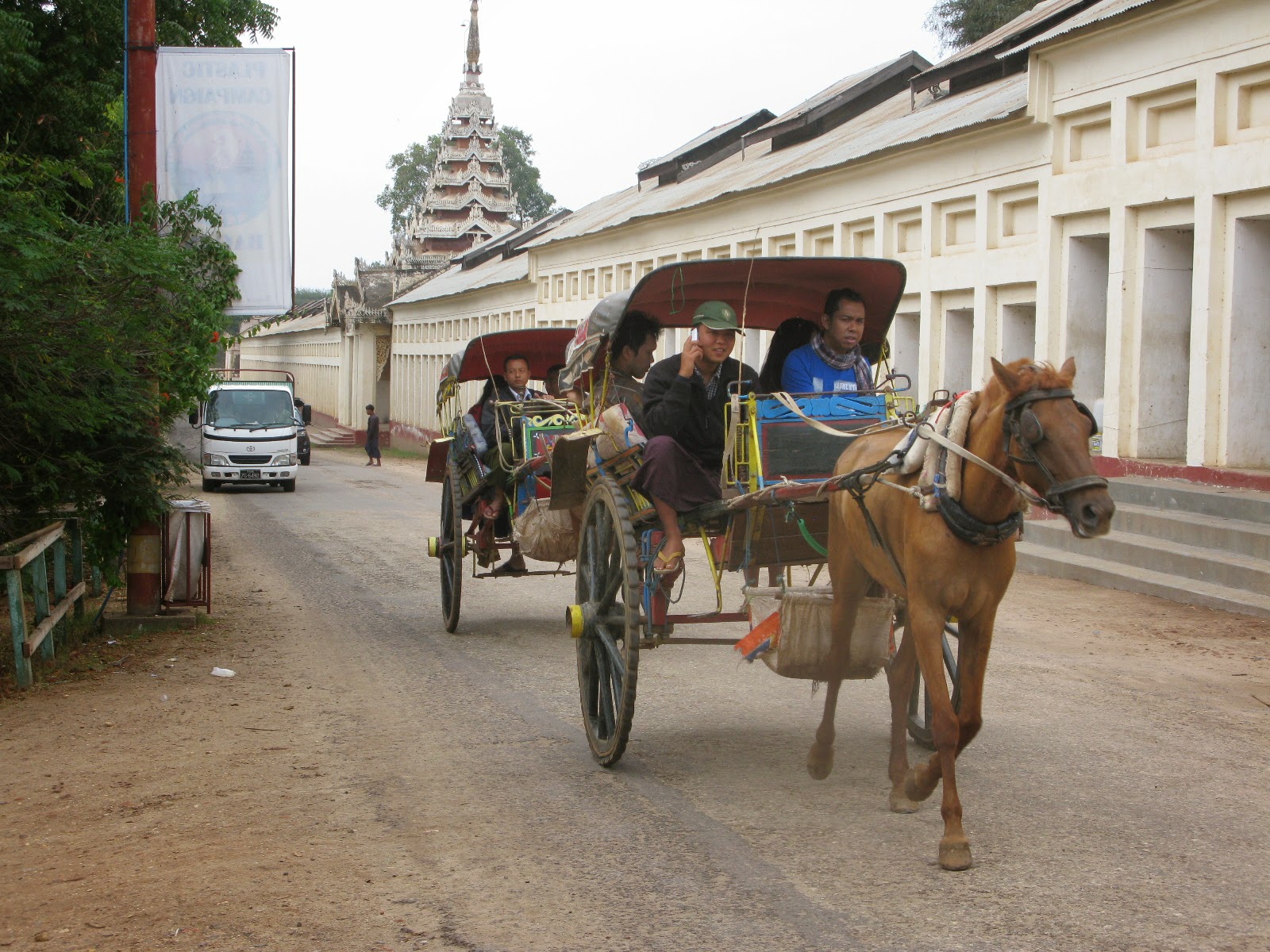 |
| Tourist horse cart in Nyaung |
 |
| Nyaung U mark |
The next day dawned wet and miserable. This was not supposed to happen in Bagan in January, and I felt sorry for the considerable number of tourists who would have only stopped in Bagan for one full day – they would have no option but to trail around the pagodas in the rain, whereas we had the luxury of waiting. Instead we set off to explore a rather muddy Nyaung U and suss out transport options for Old Bagan – we had a choice of taxis or horse carts. Our hotel was conveniently located at the bottom of a road lined with restaurants aimed at tourists, travel agents and souvenir shops (although it was still a sleepy kind of road) so we checked menus and perused the shelves of the little convenience store before heading along the main road into town and diving into the warren of stalls and alleyways that comprised Nyaung U’s market, narrowly escaping a drenching when water-weighted tarpaulin gave way just in front of us. Away from Restaurant Street, as it is known, this was real small-town Myanmar – I picked up a packet of crackers to eat with tin of tuna for lunch, but quickly replaced them on discovering the mouse-chewed hole in one end.
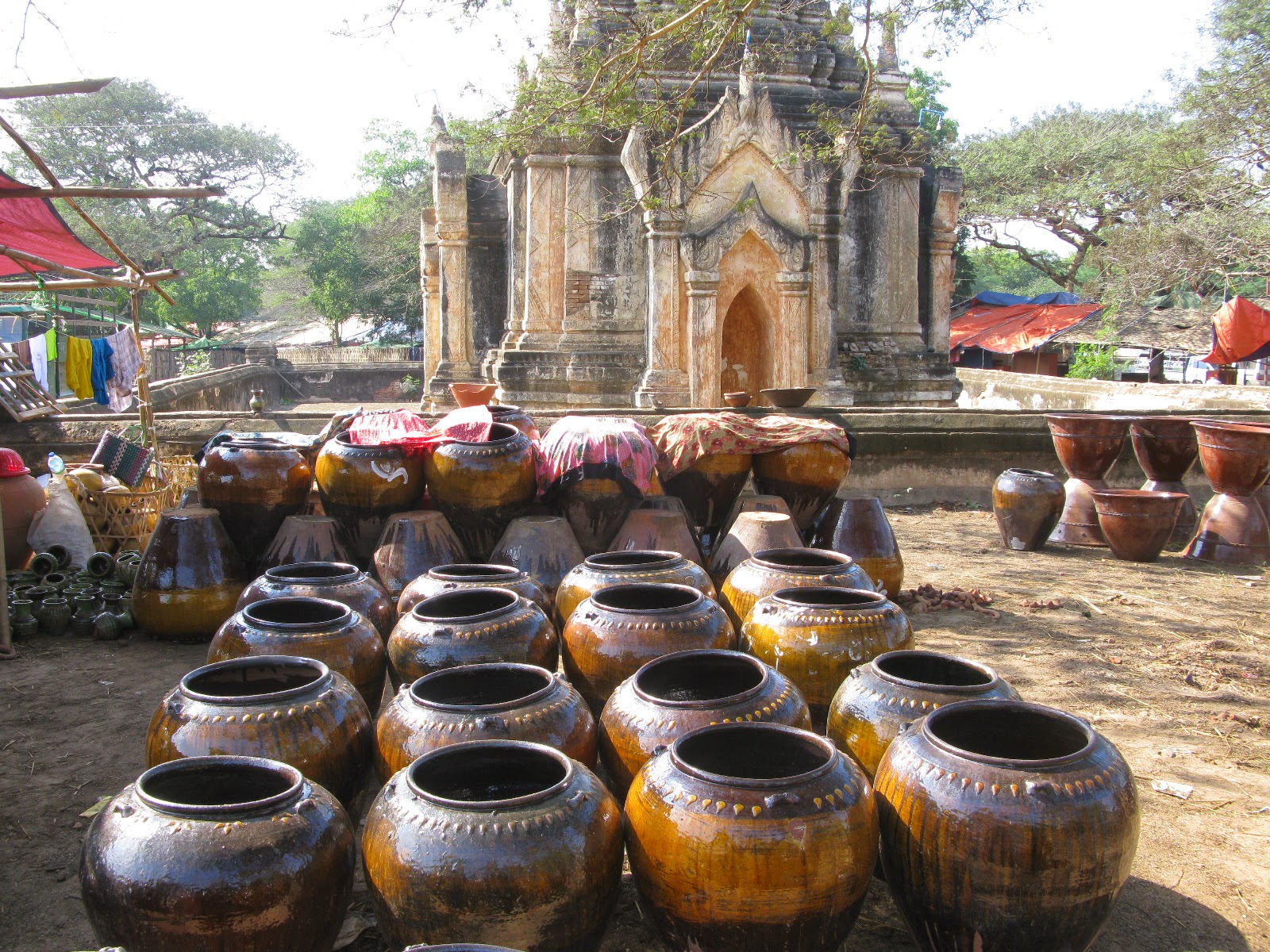 |
| Pots for sale near Ananda temple |
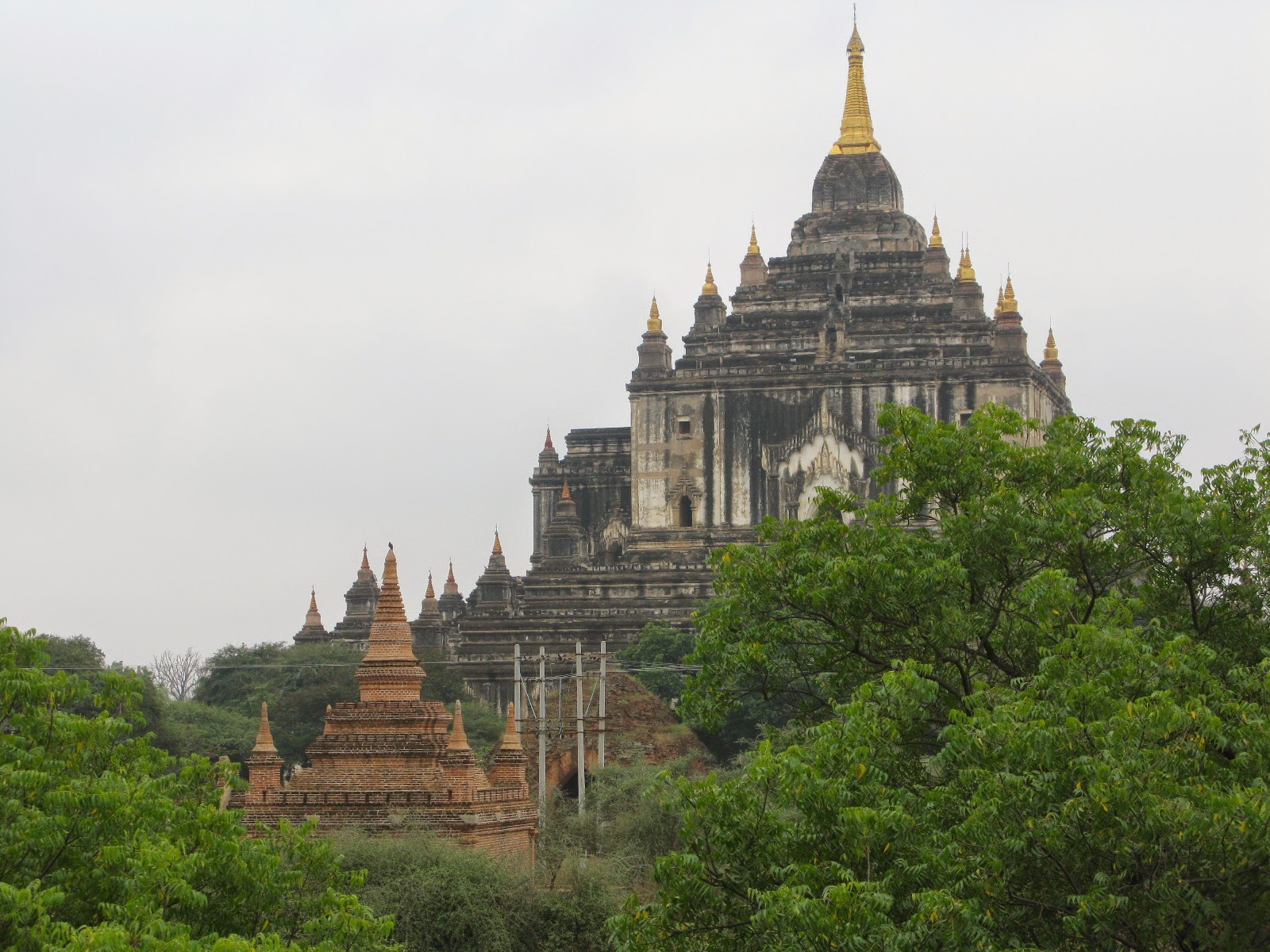 |
| Shwegugyi temple, Bagan |
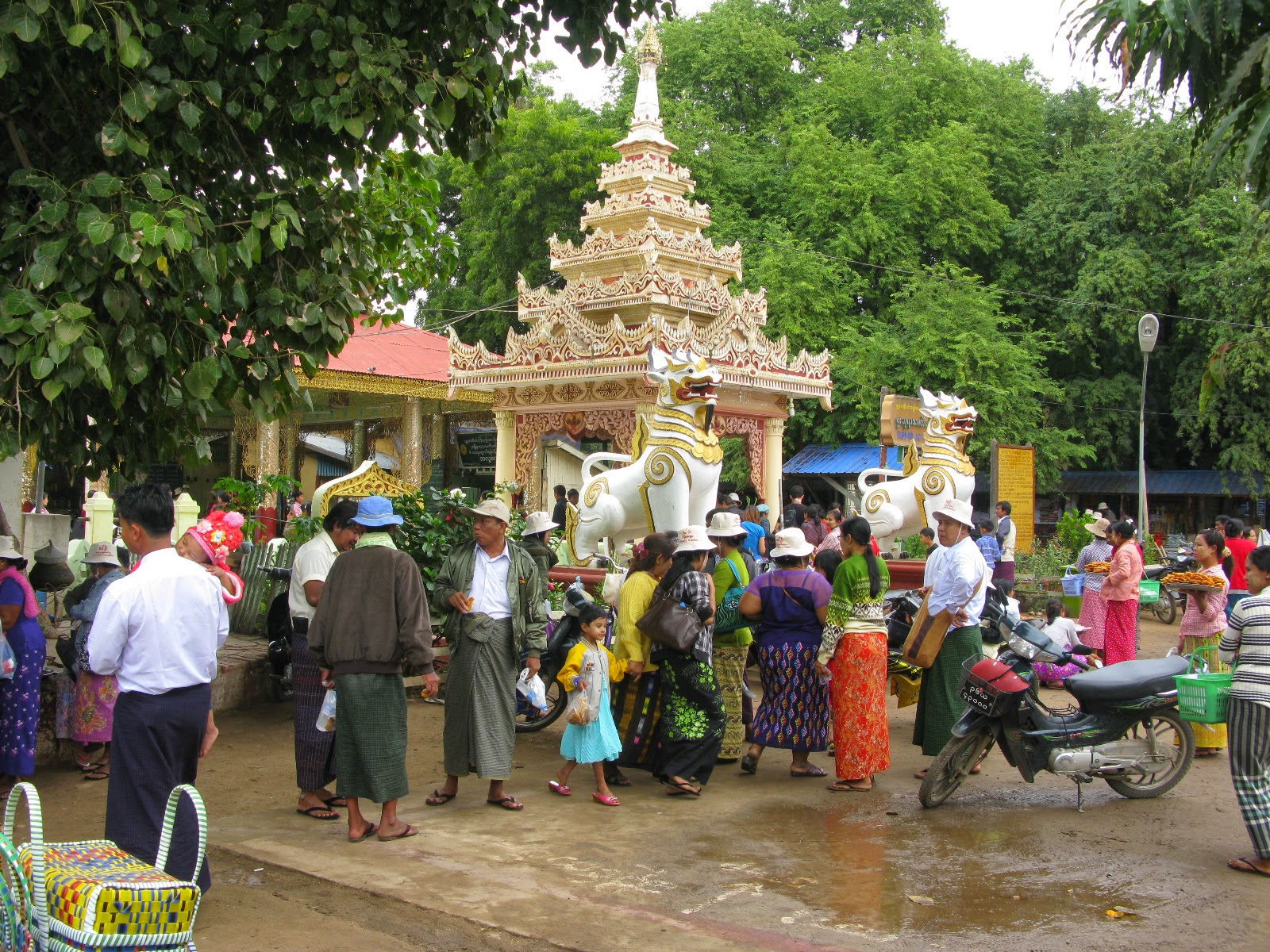 |
| Burmese tourists near Bhupaya temple |
 |
| Catering to Burmese day trippers by the Irrawaddy |
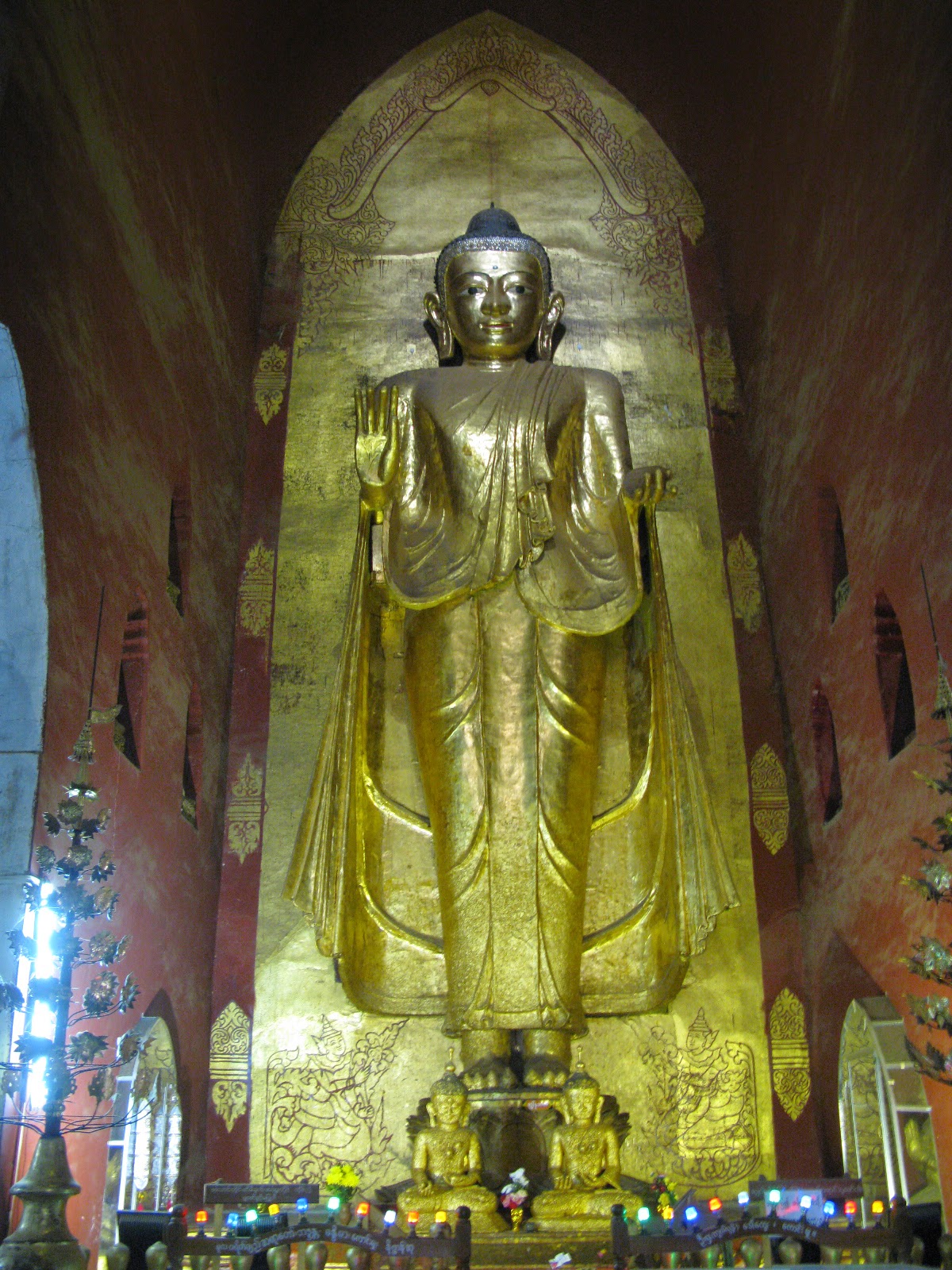 |
| Gold Buddha in Ananda temple |
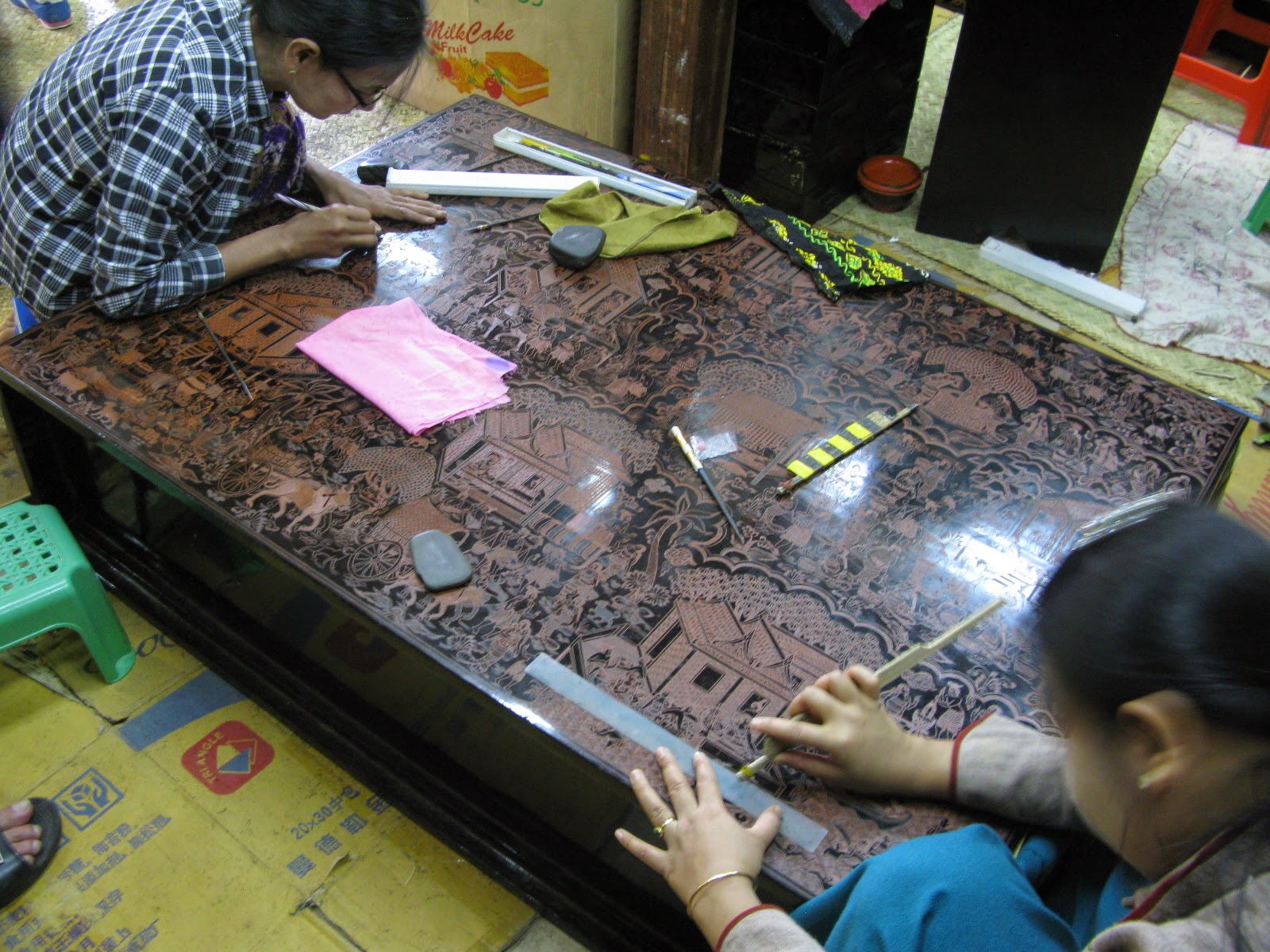 |
| Lacquerware workers |
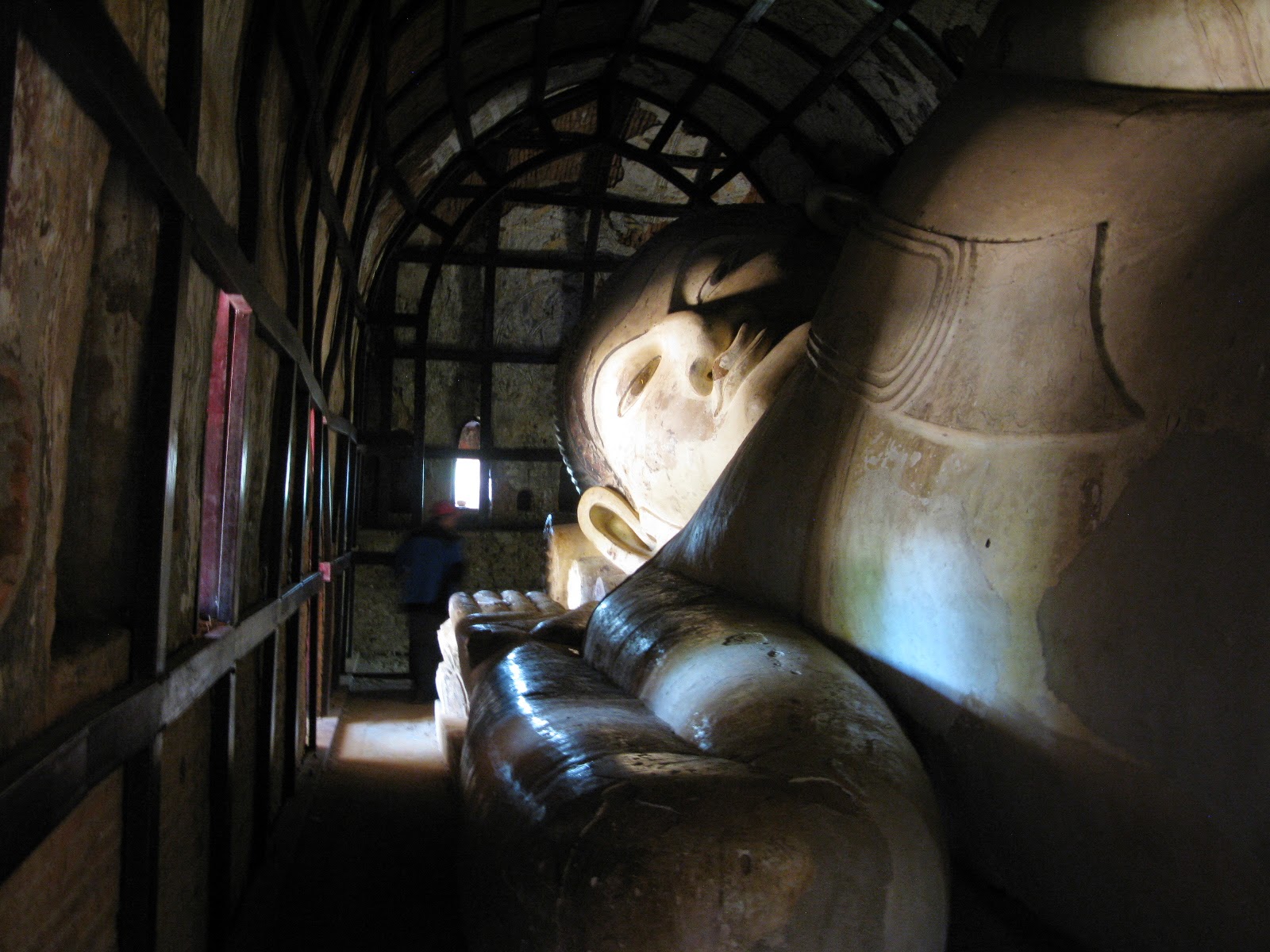 |
| Reclining Buddha at Shwesandaw |
Our final day in Bagan was designated as a rest day, knowing that we would then have four consecutive days on the road and in the air to reach our next destination, and that the the minibus back to Mandalay might pick us up as early as 06:30. So we just went for a final walk around the now dusty streets of Nyaung U, changed most of our excess kyat back into US dollars just in case we didn’t get an chance later (kyat are worthless outside Myanmar) and I took the opportunity for my first swim since leaving Chapora. The water was surprisingly frigid, and I would have to pack my swimuit wet, but I didn’t care.
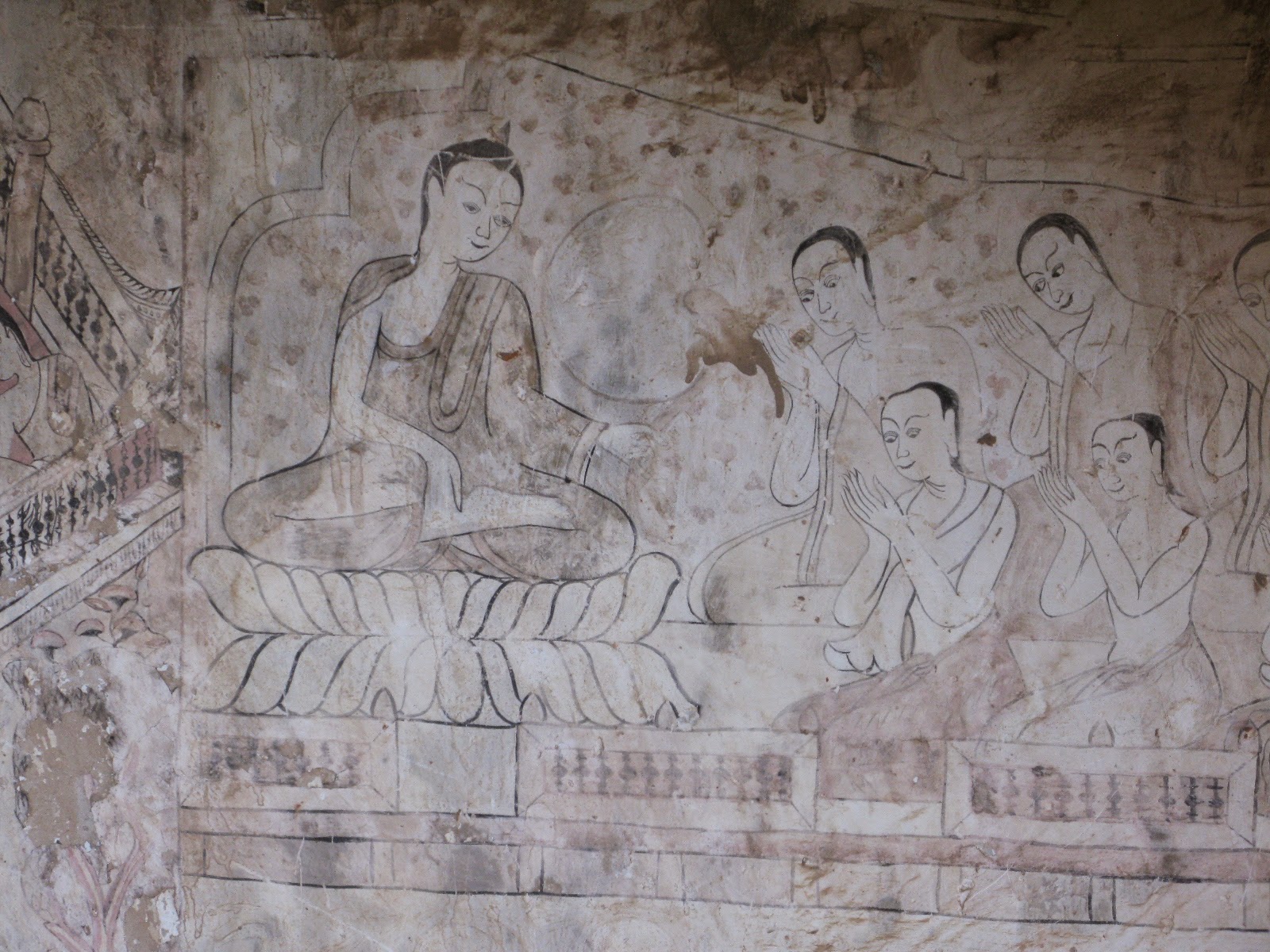 |
| Frescoes in Sulumani pagoda |


